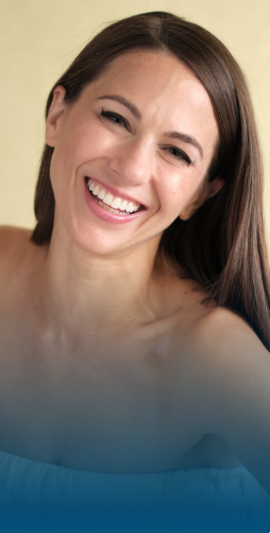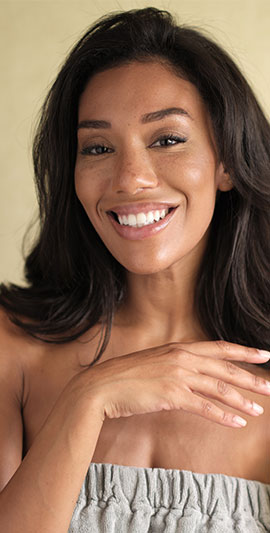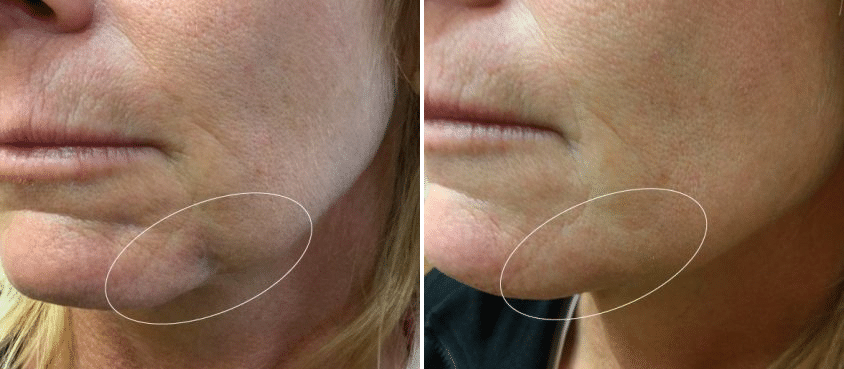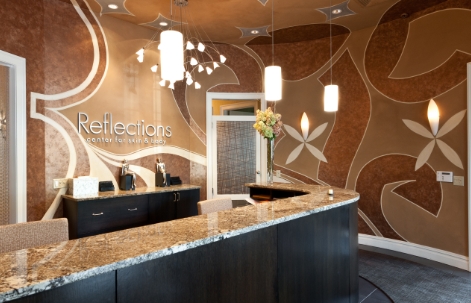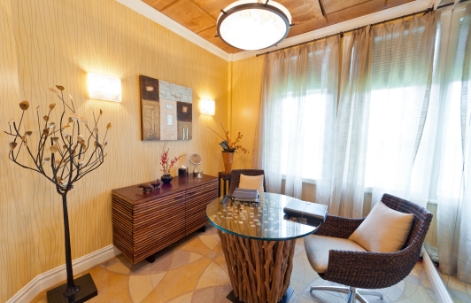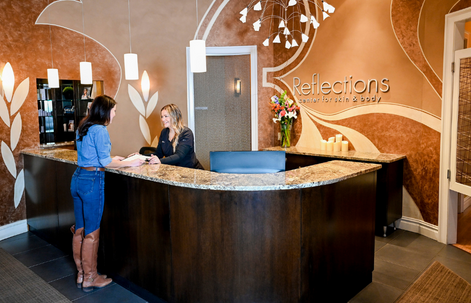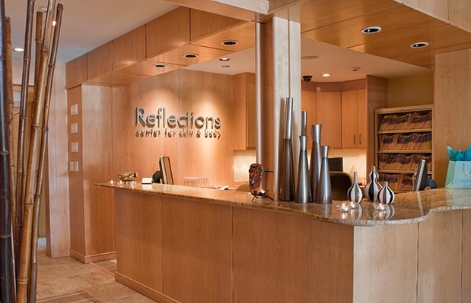If you’ve had a recent surgery or injury that has left you with a scar, chances are you’re concerned about how that scar will heal. For some patients, scars don’t just easily fade over time and become undetectable. For patients susceptible to developing a keloid over a scar this can be a big concern due to the visual impact of a keloid formation. Luckily, with laser treatments, bad scars can be prevented from forming when treated properly. New research has shown that an integrative approach to laser scar treatment is the most effective way to reduce the possibility of severe scars from forming.
Scar Revision Quick Facts
- Little to no downtime
- Safe for almost all areas of the body
- Improves the appearance of scarring
Today’s Best Options For Scar Revisions & Keloids
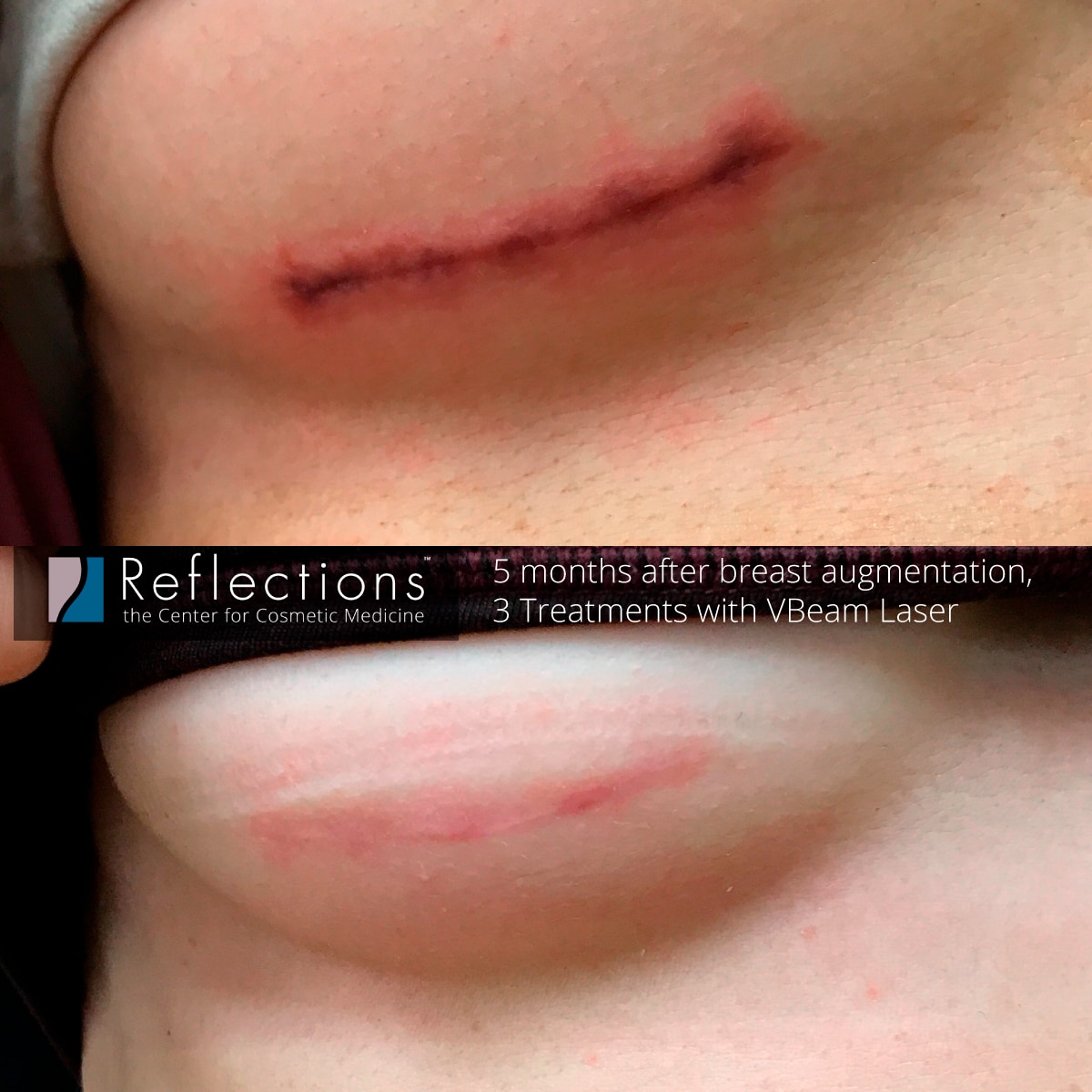
VBeam pulsed-dye laser
The VBeam pulsed dye laser targets scars with intense bursts of light to the skin. This light is then absorbed by undesirable redness on the surface of the skin, allowing for reduced redness and a more tone to the complexion. For the patient’s comfort, the VBeam uses a cold “cryogen spray” accompanying each pulse of the laser. This addition of a cold spray protects the skin from having an adverse reaction to treatment.
Learn More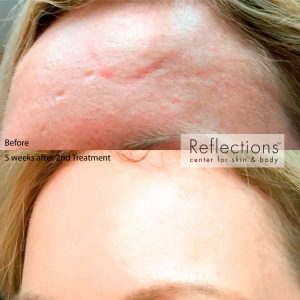
CO2 Fractional
CO2 Lasers are some of the most powerful and effective lasers available for the treatment of scars and unwanted skin texture. The CO2 laser quickly breaks up scar tissue and stimulates new cell and collagen production rather than allowing for the formation of a keloid. Some patients are wary of this powerful laser; however, when your treatment is performed by an experienced cosmetic physician or facial plastic surgeon you can be sure that they will understand how to properly adjust the settings to effectively treat your unique skin type.
Learn More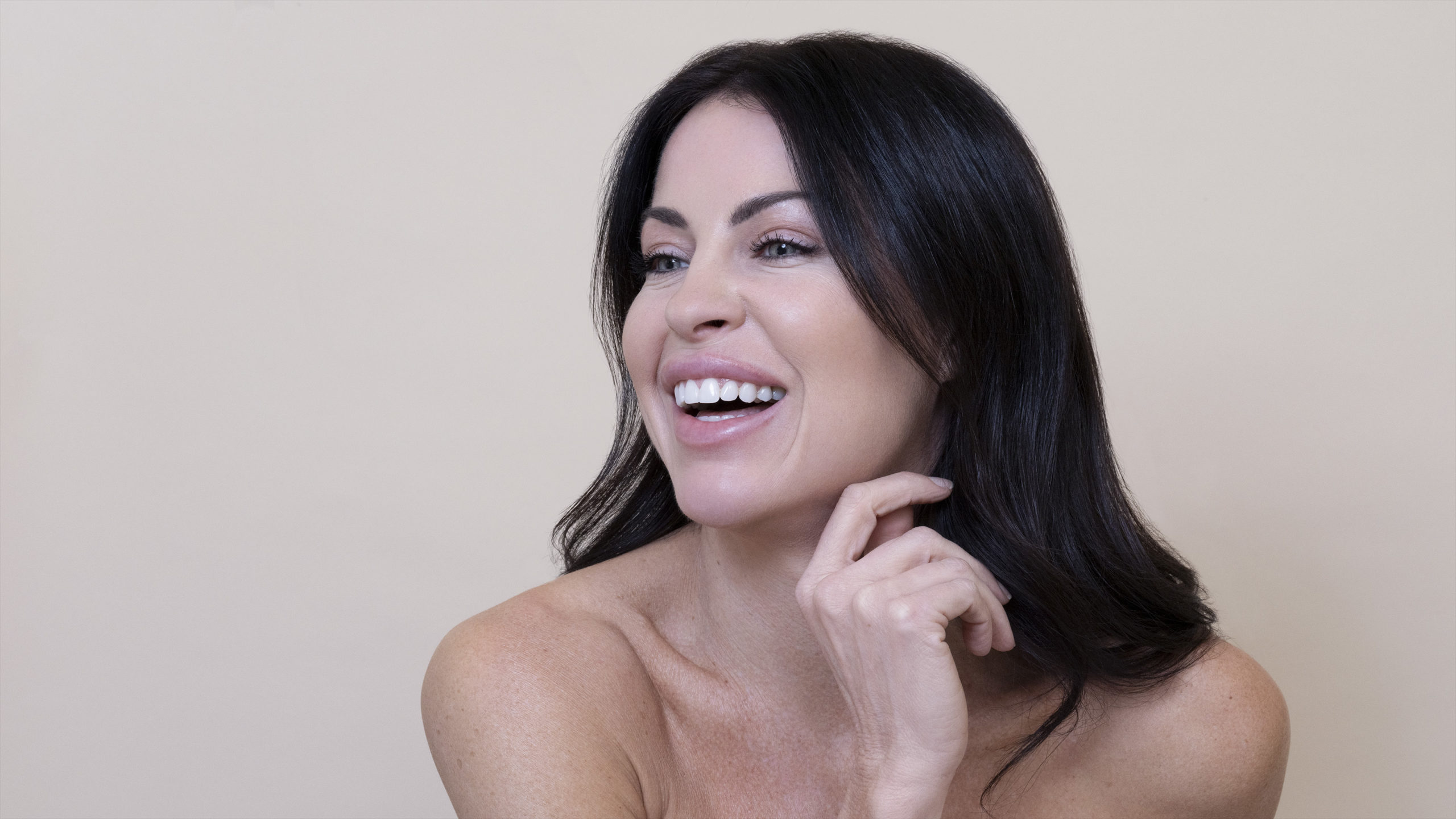
Combined Treatment Using Pulsed-Dye & CO2 Lasers
Research has shown that by combining these two types of lasers for the treatment of immature scars you can effectively avoid the formation of both dark pigmentations as well as the uneven texture of the skin. According to the Journal of Cosmetic Dermatology, pulsed-dye laser combined with the CO2 fractional laser has a beneficial effect on immature red hypertrophic scars¹.
In layman’s terms, the combining the two lasers balance each other out for a more effective treatment that involves less downtime. While the VBeam pulsed-dye targets the redness and pigmentation, it is possible for it to cause further division of the cells and therefore forming a buildup in texture. However, when a CO2 laser is added to the treatment plan, it is seen that the result is better than treating with PDL alone. Therefore, with this combination clinical treatment can be set to 3 months², which can reduce the patient’s treatment cycle length and overall downtime.

View More Scar Revision Before & Afters Results
More Before & Afters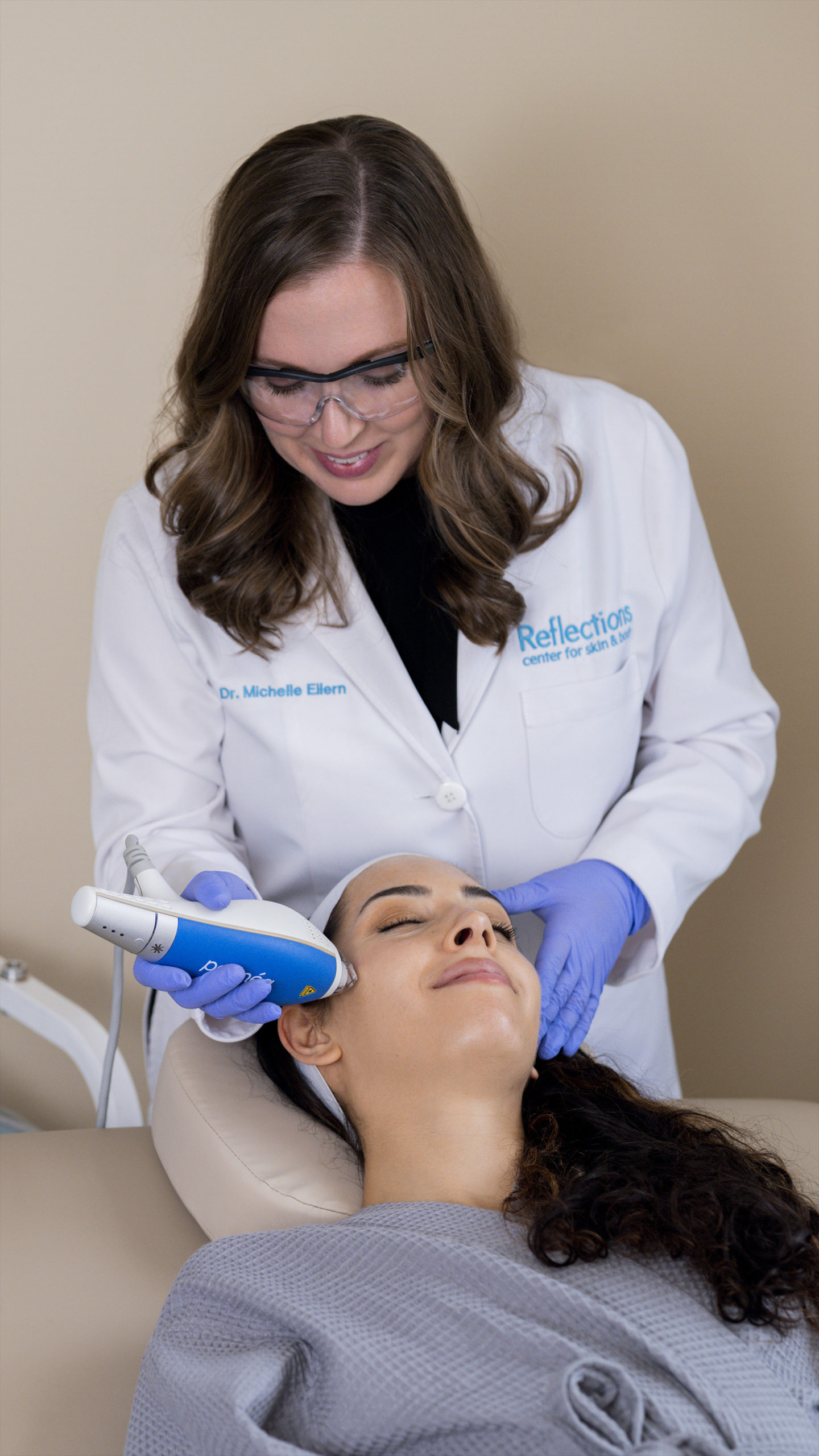

Why Choose Reflections Center For Scar Revision
We understand that scarring can cause many people to feel self-conscious, which is why we use only proven technology to help you achieve the results you desire. We want to help you look and feel your best, without lengthy downtime.
There are several factors that will ensure that you have a safe and successful scar treatment. The Reflections team is highly trained and only uses the best technology available while also keeping a pulse on research developments that can benefit our patients. We own all of our machines used for laser treatments to avoid any inconsistencies that can happen with rented equipment.
Schedule a Consultation
If you are interested in having an unwanted scar removed, give Reflections Center in New Jersey a call to schedule your consultation with one of our physicians specializing in cosmetic treatments and solutions. Reflections Center offers the most versatility in laser treatments than any other facility in the area, owning more than 50 different types of lasers.
If you would like to learn more about the laser scar treatments available at reflections, contact our Martinsville or Livingston locations to schedule an appointment today! Our friendly team will be happy to answer any questions that you may have.
Frequently Asked Questions About Scar Revisions
- What is a keloid?
A keloid is essentially the overgrowth of scar tissue. The appearance essentially a “raised scar” that can often grow larger than the original wound. Many patients are concerned about the possibility of a scar such as this forming after a surgery or injury due to the more noticeable nature of a keloid. While one’s tendency to keloid over a scar cannot be prevented, early treatment of a scar can promote healthier healing allowing it to be less noticeable.
- Is scar revision worth it?
Scar revision can be highly effective in improving the appearance of scars, making them less noticeable and smoother. Patients with large, raised, or functionally problematic scars may find scar revision particularly beneficial.
- What is the recovery time after scar revision?
For minor treatments, recovery can be immediate or take a few days. For more extensive revisions, initial recovery typically takes one to two weeks, while complete healing and scar maturation can take several months. Patients may need to avoid strenuous activities and follow specific care instructions during healing.
- What to expect after scar revision?
After scar revision, patients can expect swelling, redness, and tenderness around the treated area. These symptoms usually subside within a few days to weeks. The new scar may appear pink or raised initially but will gradually fade over several months.
- How long is the treatment?
The length of scar revision treatment varies depending on the technique used. Treatments may take 15 to 45 minutes per session, with multiple sessions required for optimal results.
- How do I prepare for scar revision?
Patients should disclose their medical history, medications, and any allergies. Dr. Fiorillo may recommend stopping certain medications or supplements that could increase bleeding risk.
Sources:
- Ouyang H-W, Li G-F, Lei Y, Gold MH, Tan J. Comparison of the effectiveness of pulsed dye laser vs pulsed dye laser combined with ultrapulse fractional CO2 laser in the treatment of immature red hypertrophic scars. Journal of Cosmetic Dermatology. 2018;17(1):54-60. doi:10.1111/jocd.12487.

Dr. Verity Johnson is a board-certified Physician specializing in non-surgical treatments. She joined our practice at the end of 2021. Prior to that, she spent time perfecting her injection technique under some of the nation’s top injectors and she joins us with the skills and experience we know patients have come to expect from a Reflections’ Expert Injector.


